
How Advanced Human Surrogates Ensure Soldier Safety in Explosive Environments
In the ever-evolving landscape of modern warfare, ensuring the safety of military personnel is of paramount importance. While efforts are made to minimize the dangers of warfare through international humanitarian law and rules of engagement, the nature of armed conflicts and the pursuit of military objectives inherently involve risks to human life and well-being.
the pursuit of military objectives inherently involve risks to human life and well-being.
More than ever, weapon technology has necessitated countermeasures to safeguard soldiers on the battlefield by providing ballistic protection. One such crucial element in this pursuit of safety is the use of military blast test dummies. These advanced human surrogates play a vital role in assessing potential risks and minimizing harm caused by explosive devices and blast events. The development and utilization of military blast test dummies are the result of collaborative efforts between military organizations, research institutions, and industry partners. By combining their expertise, these stakeholders can work towards creating safer environments for soldiers, minimizing the risks associated with explosive devices and blast events.
What are military blast dummies?
The concept of using human-like dummies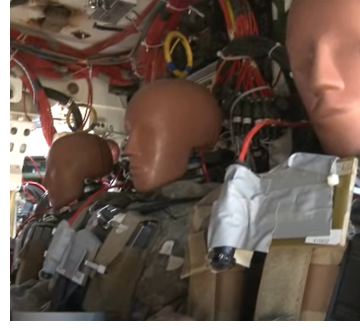 for testing purposes began in the early 20th century. Colonel John Paul Stapp, an American Air Force officer, played a significant role in advancing crash test dummy technology. He conducted numerous high-speed rocket sled tests to study the effects of acceleration and deceleration forces on the human body.
for testing purposes began in the early 20th century. Colonel John Paul Stapp, an American Air Force officer, played a significant role in advancing crash test dummy technology. He conducted numerous high-speed rocket sled tests to study the effects of acceleration and deceleration forces on the human body.
During World War II, the development of military blast test dummies gained prominence. The U.S. military needed a way to understand the effects of explosions on soldiers and equipment. The earliest blast test dummies were simple and lacked sophisticated sensors and instrumentation. They were primarily used to assess the impact of blast waves, fragmentation, and other explosive effects on the human body.
As the understanding of crash dynamics and safety improved, the automotive industry began to adopt crash test dummies for evaluating vehicle safety. The goal was to simulate and understand the effects of collisions on human occupants, with the aim of designing safer vehicles and restraint systems.
Today, the blast test dummy is a sibling to the automotive anthropomorphic test device (ATD) and is meticulously designed to replicate the human body's physiological responses to the complex dynamics of an explosion. The dummies are subjected to controlled explosive tests, where they experience the forces and pressures that soldiers might encounter on the battlefield.
The earliest blast test dummies were simple and lacked sophisticated sensors and instrumentation. They were primarily used to assess the impact of blast waves, fragmentation, and other explosive effects on the human body.
Why do we need them?
As with automotive design, the objective of human safety is a vital pursuit. The data collected from blast tests is meticulously analyzed to evaluate the potential injuries soldiers could sustain and to develop effective strategies for mitigating them. The dummies are crucial for risk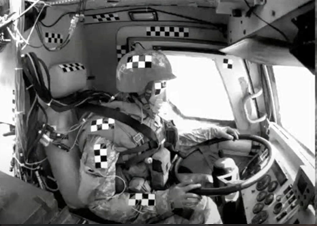 assessment and mitigation and for the development of protective equipment such as helmets, body armor, and vehicle components to understand and identify areas of vulnerability. They can help us understand blast-related Injuries and predict concussions, traumatic brain injuries, internal injuries, and other trauma thereby allowing medical professionals to develop appropriate treatments and rehabilitation strategies.
assessment and mitigation and for the development of protective equipment such as helmets, body armor, and vehicle components to understand and identify areas of vulnerability. They can help us understand blast-related Injuries and predict concussions, traumatic brain injuries, internal injuries, and other trauma thereby allowing medical professionals to develop appropriate treatments and rehabilitation strategies.
The use of blast test dummies significantly contributes to training and preparedness in the development of realistic training scenarios and safety protocols for soldiers. By simulating the effects of explosions on the human body, the military can identify thresholds for injuries, set criteria for protective equipment performance, and develop guidelines for safe operational practices.
So, what’s available?
While our military dummies are based on sophisticated automotive dummy designs, they incorporate highly specialized biofidelity features and instrumentation to test the conditions encountered in combat and the exceptional countermeasures required to keep soldiers alive and whole.
Take the Humanetics FOCUS headform for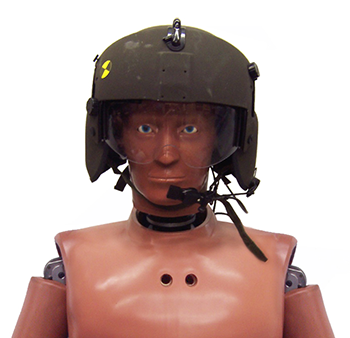 example. The FOCUS is a test platform for evaluating eye and facial devices to assess injury mitigation by measuring facial and eye impact loads. The headform is used to test and appraise various protective devices and other equipment under impact events. It’s ingeniously designed as a modular system with the ability to select the instrumentation applicable for a variety of test scenarios, using 8 discrete facial bones, 2 synthetic eye modules, and up to 11 available load cells, while still being compatible with standard style Hybrid-III necks. The FOCUS headform can supply data for all anterior and lateral orientations for bone and skin testing.
example. The FOCUS is a test platform for evaluating eye and facial devices to assess injury mitigation by measuring facial and eye impact loads. The headform is used to test and appraise various protective devices and other equipment under impact events. It’s ingeniously designed as a modular system with the ability to select the instrumentation applicable for a variety of test scenarios, using 8 discrete facial bones, 2 synthetic eye modules, and up to 11 available load cells, while still being compatible with standard style Hybrid-III necks. The FOCUS headform can supply data for all anterior and lateral orientations for bone and skin testing.
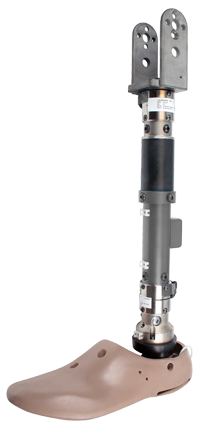 There’s also the MIL-LX (Military Lower Extremity) lower leg incorporating aspects of both the standard Hybrid-III-50th lower leg and the THOR-LX leg and incorporating energy-absorbing elements optimized for measurement of the vertical forces and accelerations imparted from below by Anti-Vehicular Land Mines (AVLM). The leg is designed to analyze the effectiveness of countermeasures and can attach to any standard Hybrid III 50th percentile ATD.
There’s also the MIL-LX (Military Lower Extremity) lower leg incorporating aspects of both the standard Hybrid-III-50th lower leg and the THOR-LX leg and incorporating energy-absorbing elements optimized for measurement of the vertical forces and accelerations imparted from below by Anti-Vehicular Land Mines (AVLM). The leg is designed to analyze the effectiveness of countermeasures and can attach to any standard Hybrid III 50th percentile ATD.
Another interesting example is the side impact dummy, the MIL-SID, capable of measuring both lateral and vertical forces. Previous testing had revealed that a significant amount of the forces occurring are lateral in nature and that a side impact dummy would be beneficial to capture these measurements. The dummy is derived from the core components of the automotive EuroSID-2 dummy with rib extensions (ES-2re), coupled with the head and neck of the H3-50th Percentile Male dummy, a unique lower neck load cell, and the MIL-LX lower legs.
And most recently, the U.S. Army has commissioned the WIAMan (Warrior Injury Assessment Manikin), a new biofidelic, warfighter test manikin engineered to assess potential skeletal injuries of soldiers exposed to underbody blasts (UBB).
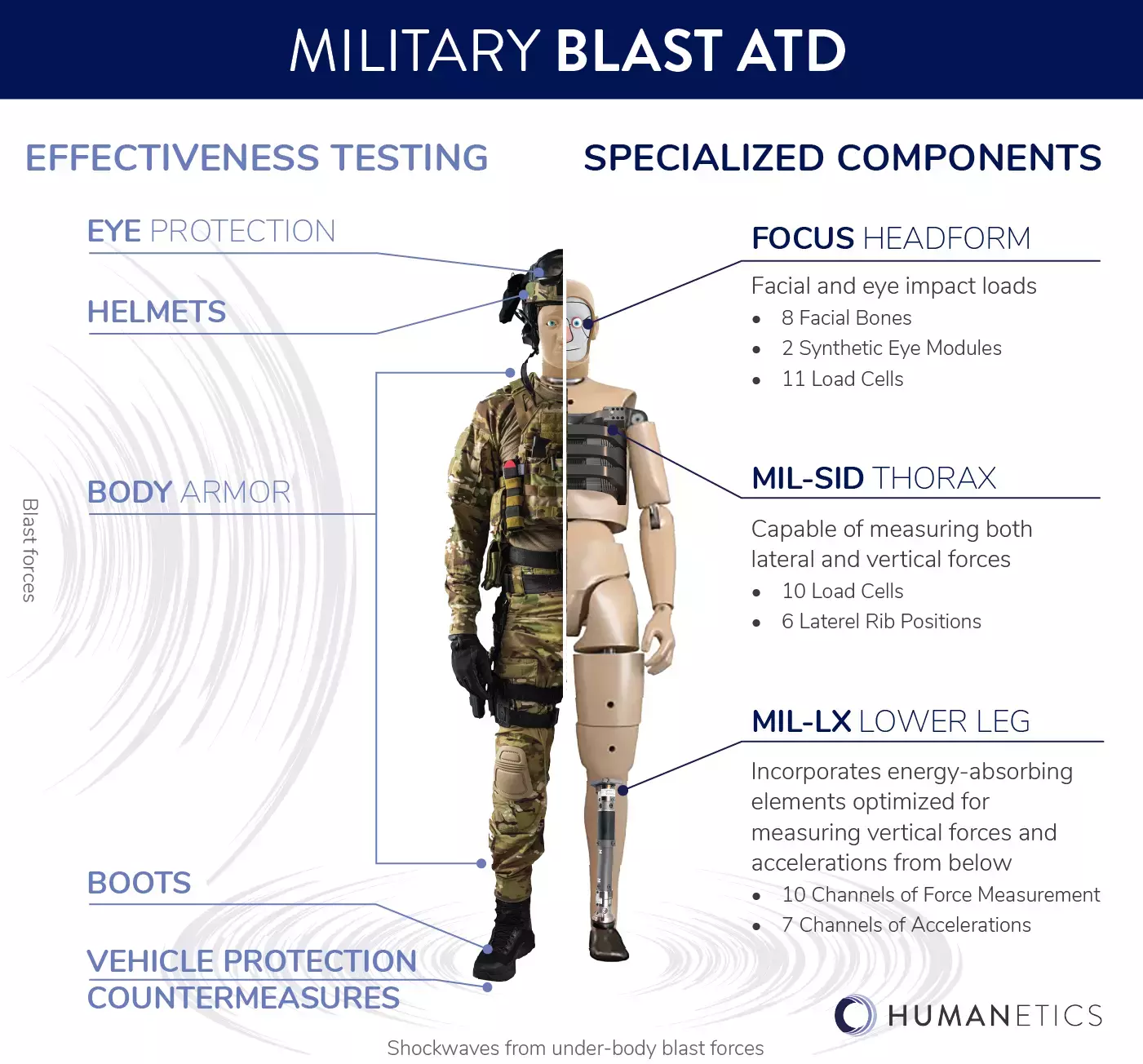
...they incorporate highly specialized biofidelity features and instrumentation to test the conditions encountered in combat and the exceptional countermeasures required to keep soldiers alive and whole.
The insights gained from military blast test dummies are instrumental in driving advancements in protective equipment and strategies. By analyzing the data collected during blast tests, researchers can identify areas of vulnerability and focus on improving the design and effectiveness of helmets, body armor, and other protective gear. Based on the results and insights gained from blast tests, continuous improvements are made to enhance the realism and reliability of these tools and increase their ability to provide valuable data for soldier safety.
We owe a special duty to our men and women in uniform. When placed in harm’s way, they deserve every advantage for returning home safely to their loved ones. By continually improving our understanding of the challenges faced by soldiers in explosive environments, we can strive to create safer conditions and protect those who protect us. Humanetics is proud to be part of that mission.


Mark Brown
Mark is the Product Marketing Manager at Humanetics Safety and works closely with Engineering and Sales to develop and refine content that is both useful and informative for our industry. With over two decades of experience in crash test dummy product Quality, Technical, Sales, and Marketing, Mark produces a wide range of media and publications including our service bulletins, webinars, editorial articles, and contributes to our marketing collateral.